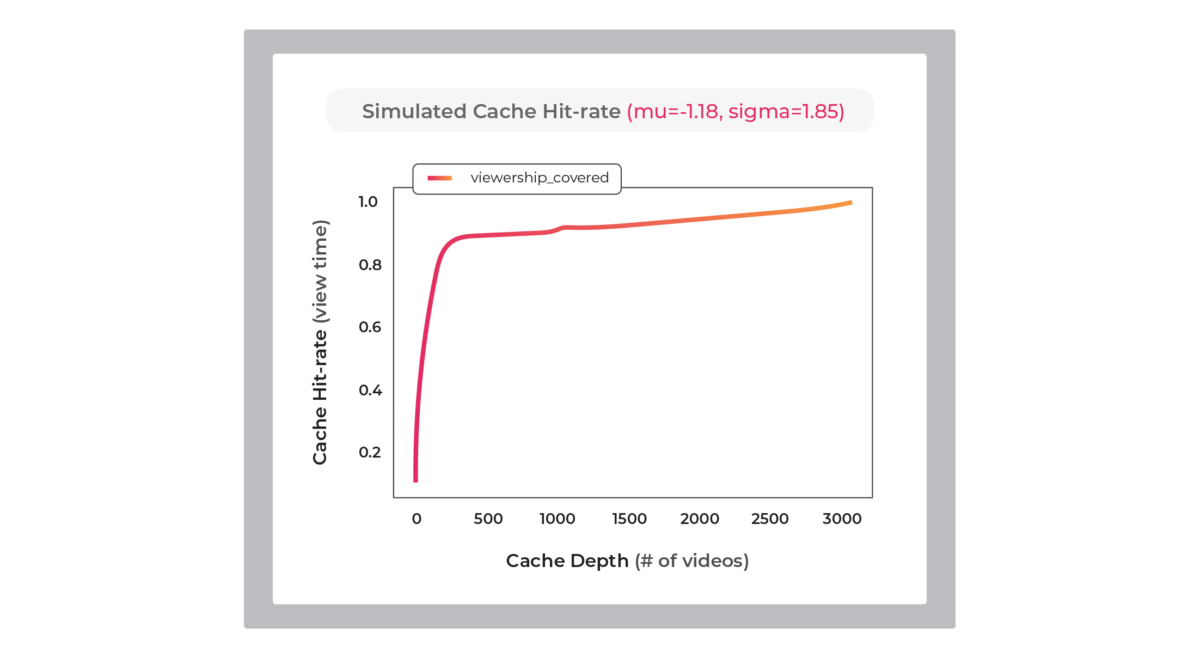Siden enables mobile network operators (MNOs) to offer fiber-like home broadband over their wireless networks to millions of home subscribers. Using Siden’s in-home caches, MNOs are able to leverage their extensive wireless capital investments to meet the growing demand for OTT video in the home, opening up massive revenue opportunities from home Internet subscribers. Similarly, participating OTT video provider partners (Content Partners or CPs) benefit by converting millions of mobile-only / mobile-first subscription users to much higher engagement and higher ARPU home subscription users.
Siden’s in-home cache device, called Siden Home Cache, enables MNO partners to expand their effective capacity 5-10x by serving video traffic from an in-home cache (Siden Home Cache). Siden Home Cache has terabytes of storage, to which Siden prepositions 1,000s of hours of the most popular content. Siden uses excess network capacity during time periods when the network isn’t fully loaded, to refresh the in-home caches with new content on an ongoing basis. When the video content is served from Siden Home Caches within the home, it is served locally over WiFi and eliminates the long start-up times and re-buffering pervasive in regular networks supporting home Internet, leading to superior user video experience. Less popular video traffic and general internet traffic (making up only 10-20% of total network traffic) are served wirelessly.
Siden Home Cache relies on three factors:
- With 1-6 TB of cache storage, Siden’s Home Caches can store 1,000s of hours of video content
- Per-home consumption can be accurately predicted using modern artificial intelligence techniques
- OTT video consumption is highly concentrated to begin with. For example, a top three global SVOD provider reports 90% of viewing from 10% of their catalog, and a large Asian AVOD / SVOD provider reports 90% of viewing from 1K titles in their 12K+ title catalog
Targeting of content to a Home Cache is performed by the Siden Intelligence Engine. This targeted content is then pre-positioned to the Home Cache using excess wireless network capacity by the Siden Content Distribution Service (CDS). To enable use of Home Cache, Content Partners simply use Siden’s CDS as their CDN.
In all, since 100s of GBs are served right from the Home Caches, Siden helps MNOs offer 250GB+ per month of home Internet usage to users, while having only ~50 GBs or less of traffic served by the wireless network in real-time. Further, because Siden uses excess capacity for prepositioning of content into the Home Caches, it does not require additional network CapEx investment and instead increases capacity of an already deployed and financed network.
The figure below illustrates the CDS architecture and key functional flows.
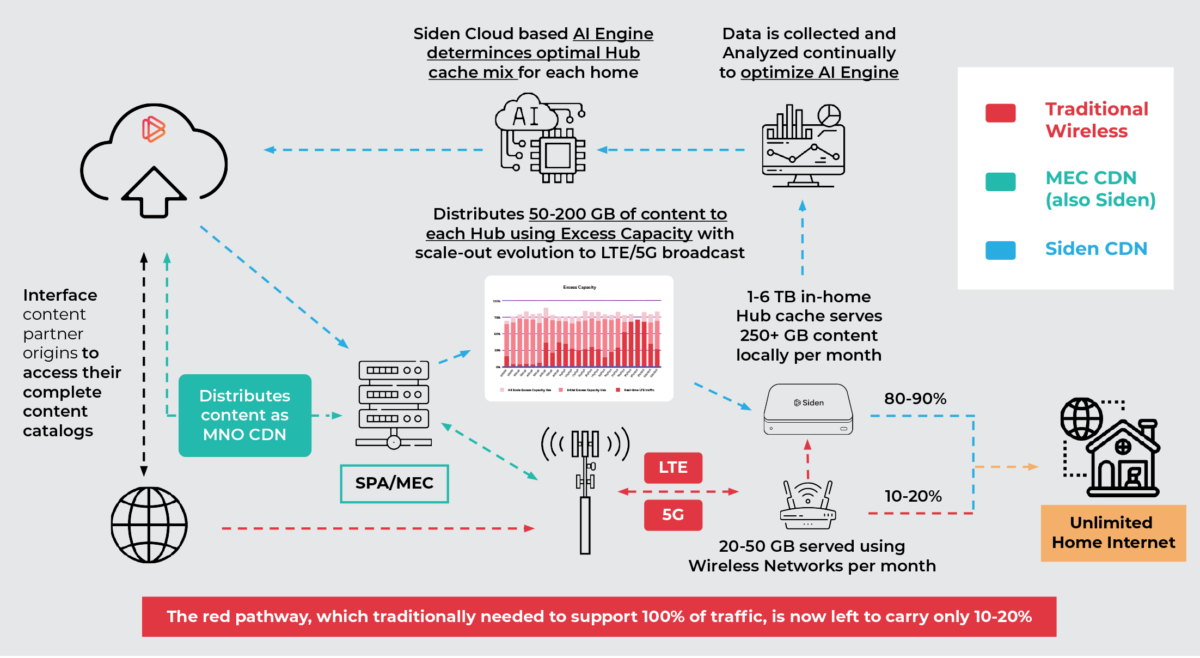
Use of Excess Wireless Network Capacity to Pre-Position Content
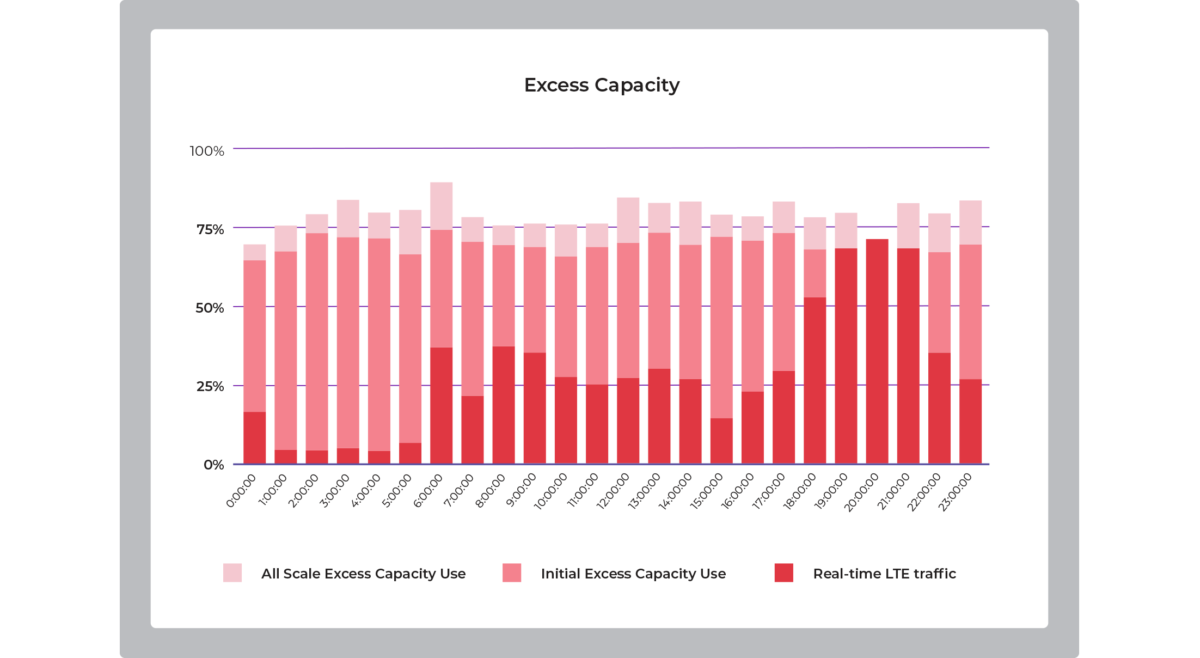
As mentioned above, the Siden CDS uses excess wireless network capacity to pre-position content on Home Caches. Siden collects per-cell capacity utilization reports from the wireless network along with radio condition and throughput metrics from each Home Cache. These are used to:
- Determine the level of non-Siden network traffic in the cell
- Estimate the excess (unutilized) radio capacity that Siden can harvest, leaving a 20-30% capacity margin for unexpected traffic
- Determine the target throughput for each Home Cache delivery so as to precisely use that excess capacity
Use of Artificial Intelligence within the Siden Content Distribution Service – Siden Intelligence Engine
Maximizing Home Cache Hit-Rate
The primary metric that Siden’s Home Caching CDS works to optimize is Home Cache hit-rate, measured as:
bytes consumed from Siden Home Cache — divided by — total bytes consumed
Home Cache hit-rate reflects how accurately Siden predicts the user’s consumption needs, as well as how effectively it fills the Home Cache with content that the user is likely to consume.
There are two optimization problems involved in maximizing Home Cache hit-rate that make use of artificial intelligence:
- Consumption prediction – determining what content a home is likely to consume
- Delivery optimization – using the network’s excess capacity efficiently when filling Home Caches with content
Consumption Prediction
The Siden CDS uses the Siden Intelligence Engine to create a target Home Cache state – a list of assets for each Home Cache prioritized by likelihood of consumption. This is done by artificial intelligence algorithms using two data sources as input:
- Siden’s own analytics on content consumed through the Siden CDS. This includes details such as the asset URL, the associated content partner, and the quantity of bytes served
- Lists of popular content provided by Content Partners through the Siden Pre-positioning API. Siden does not receive user-specific consumption data from Content Partners
Target Home Cache states are then built in two stages:
- A generic target state is built per MNO region, based on an estimate of content popularity within that region
- Per-home target states are generated using artificial intelligence techniques such as collaborative filtering and ensembling
Generic target states are used when home-specific data is not available, such as when factory seeding a Home Cache with content or when performing initial deliveries to a newly set up Home Cache. As consumption data is collected, the Siden Intelligence Engine shifts to using a per-home target state. Both types of target state cover all Content Providers simultaneously.
The collaborative filtering used when producing a per-home target state relies on consumption-based similarities between homes and between content. It naturally makes predictions such as:
- If a user watches an episode of a series, they are more likely to watch the following episode
- If a user watches a certain genre, they are likely to watch other content in that genre
- If two users have watched similar content, then they are each more likely to watch things the other user has watched
- If two titles are watched by many of the same users, then users who watch one are likely to watch the other
This reasoning is based purely on Siden’s own consumption analytics and does not rely on metadata from content partners.
Delivery Optimization
Siden utilizes the Siden Intelligence Engine to also learn about varying network conditions, radio channel quality levels experienced by Home Caches, and other factors that influence Siden’s use of excess capacity in the wireless network, and to guide the optimized use of excess capacity by Siden CDS to optimally pre-position content into Home Caches.
Excess Capacity Estimation
Because Siden pre-positioning traffic passes through the same wireless cells as regular wireless traffic, MNO capacity utilization reports do not separate the two and provide only a summary of total traffic. Siden uses AI models to predict per-cell excess wireless capacity from past and present MNO reports, CDS traffic metrics, and Home Cache network condition metrics.
Radio Channel Quality Estimation
Radio channel quality affects the amount of wireless capacity needed to reach a certain level of throughput when pre-positioning to a Home Cache. AI models are used to predict these amounts for both unicast and broadcast delivery modes. The results are used when making delivery tradeoffs as described below.
Unicast vs. Broadcast Tradeoffs
Siden pre-positioning supports two delivery modes:
- Unicast: deliver to a single Home Cache
- Broadcast: deliver to all Home Caches in range of a cell
When deciding how to use network capacity, the CDS must decide:
- Whether to unicast or broadcast (if available)
- What Home Cache(s) to deliver to – selecting a single Home Cache for unicast, or a cutoff spectral efficiency level for broadcast
- Which content to deliver
For broadcast, Siden leverages Evolved Multimedia Broadcast Multicast Service (eMBMS) – which is part of the 4G (LTE) system specification. With eMBMS enabled in the 4G network and on Home Caches, one delivery stream can feed multiple Home Caches at once. Adding in broadcast capability can lead to dramatic, 10-100x, higher spectrum efficiency and distribution economics depending on the number of Siden Home Caches covered by a given cell.
The Siden Intelligence Engine trades off unicast/broadcast and content decisions to maximize the expected impact on Home Cache hit-rate summed across Home Cache’s being delivered to. For instance, popular content might be broadcast at a lower throughput to multiple Home Caches while niche content is likely to be unicast at a higher throughput to a single Home Cache.
Test Results & Observed Cache Hit-Rate Success
Measurements of Siden system performance have shown that we can successfully achieve a high cache hit-rate for integrated Content Partners. We have two primary sources of evidence:
- Production data coming from MNO trial customers
- Simulations, showing the feasibility and scaling properties of our ML algorithms
Cache Hit Rate Observed during Trials
Home Cache hit-rates of 83 – 96% were achieved during MNO trials. In one trial, ~220 GBs of data were served from Home Caches, while ~250 GB were served in total using the Siden CDS. The following graphic shows a snapshot from a recent MNO trial:
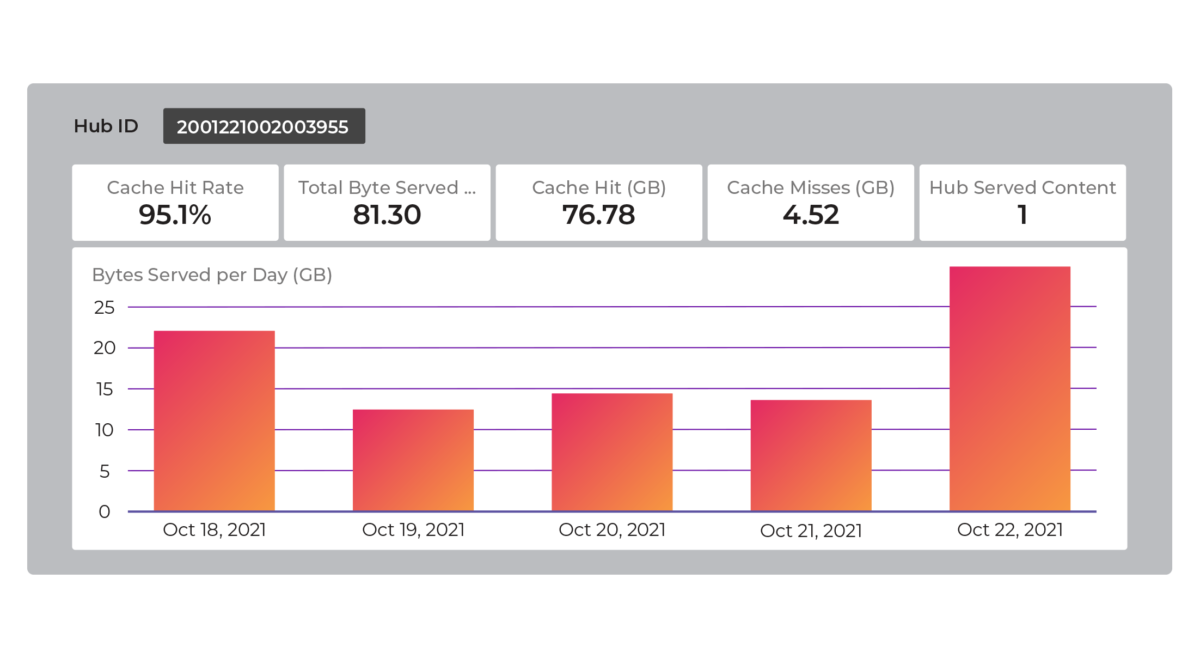
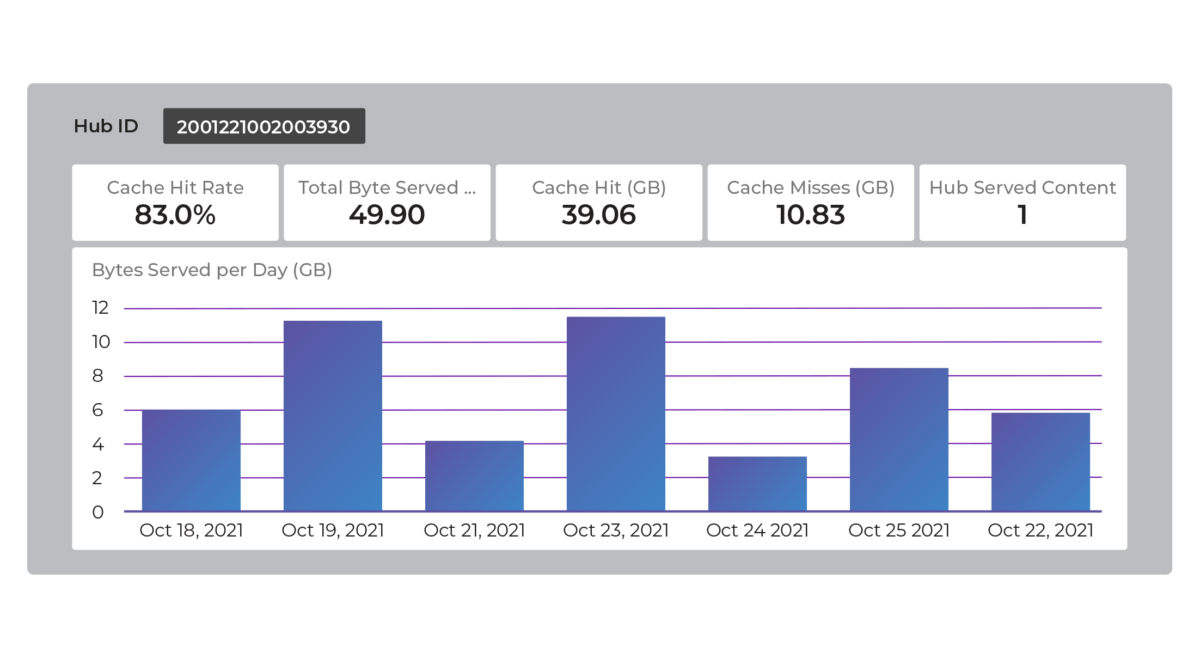
Delivery Optimization – Volume of Data Delivered to Home Caches
During the same trial, on average, ~10GB of data was delivered to each Home Cache per day using excess capacity. The Siden CDS requires the ability to distribute ~50-100 GBs per month to each Home Cache.
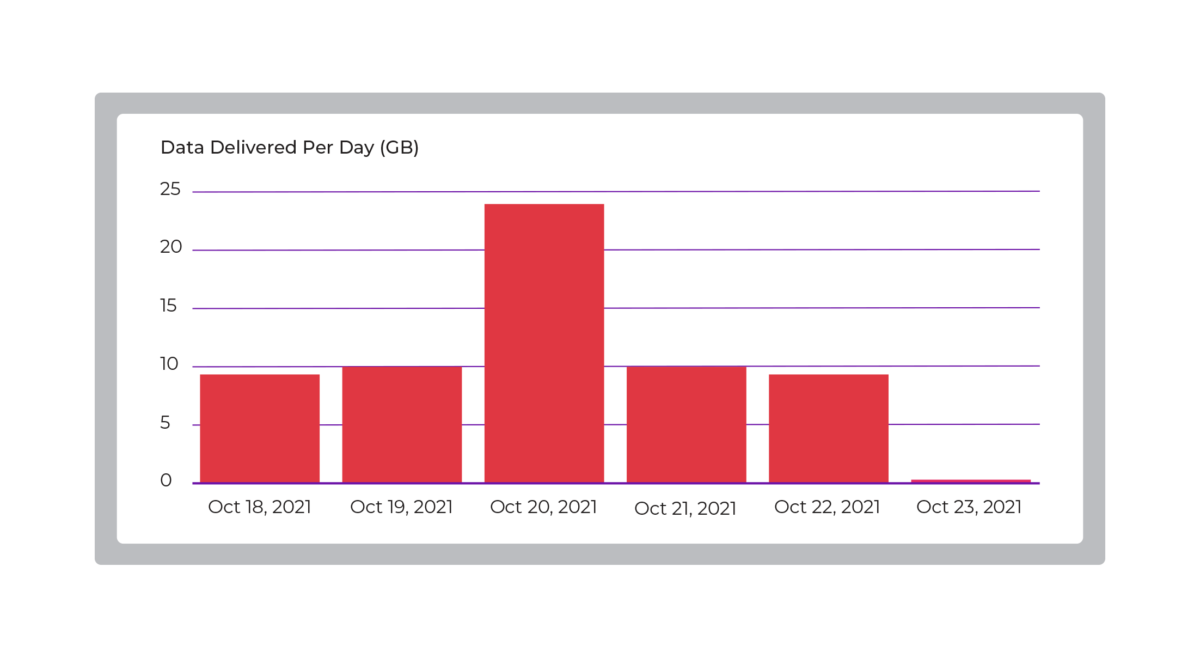
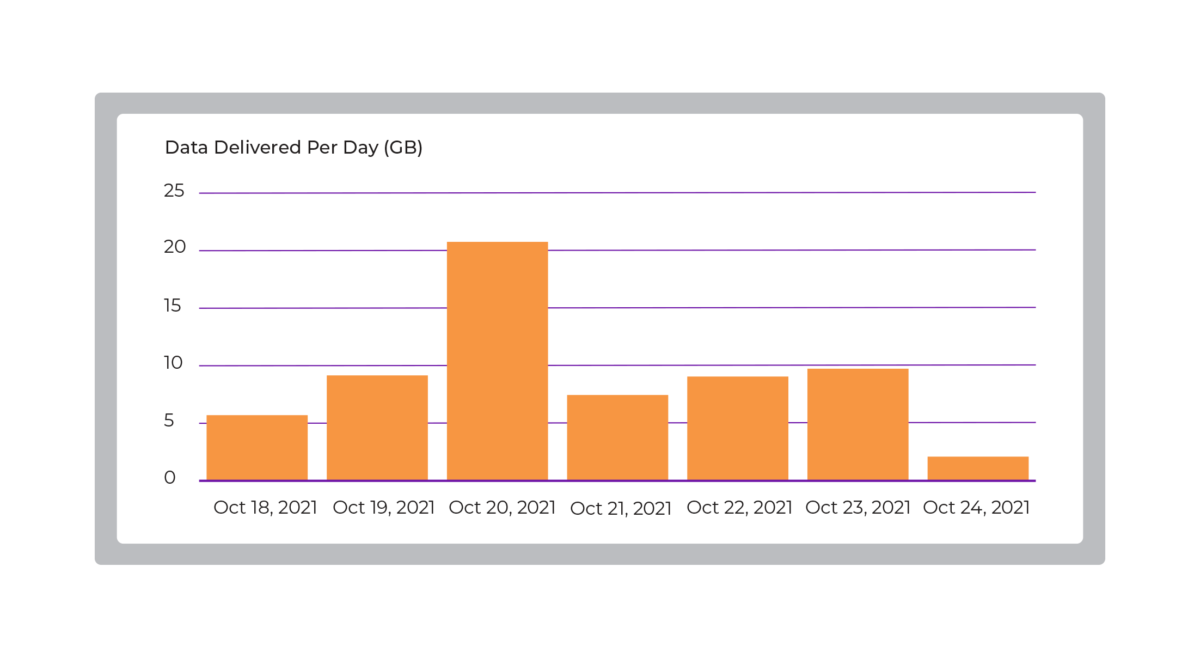
Statistical Analysis of Results / Observations
- Fitting a log-normal popularity distribution to the trial data suggests that popularity alone (without user-specific collaborative filtering) would provide a 84.4% Home Cache hit-rate when caching the top 20% of video content
- Simulations suggest that user-specific caching can get cache hit-rate up as far as 90% when caching 10% of video content
